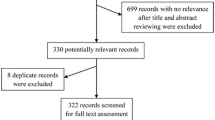Abstract
One of the most distinct features of middle ear cholesteatoma is bone destruction. Aetiology of cholesteatoma is thought to be multifactorial. Endotoxins produced by bacteria are thought to initiate the inflammation process in the middle ear leading to cholesteatoma. There are physiological differences in bone metabolism between men and women. The aim of our study was the immunohistochemical evaluation of the contents of two key components of the OPG/RANK/RANKL triad—RANKL and OPG in cholesteatoma, to analyse if there are any differences between the sexes and to evaluate the bacteria species isolated from cholesteatoma just before surgical treatment and to evaluate their plausible influence on the expression of OPG and RANKL in cholesteatoma. Twenty-one adult patients with acquired cholesteatoma who underwent surgery were analysed. There were no statistically significant differences in the expression of both regulators of osteoclastogenesis between the sexes. In 38.1 % patients cholesteatoma was not infected, whereas in 61.9 % patients various bacterial infections or mycosis were found. The most frequently isolated species was Pseudomonas aeruginosa (14.29 % infections) followed by Staphylococcus aureus (9.52 % infections). There were no statistically significant differences in expression of both OPG and RANKL between uninfected and infected cholesteatomas.



Similar content being viewed by others
References
Bassiouny M, Badour N, Omran A et al (2012) Histopathological and immunohistochemical characteristics of acquired cholesteatoma in children and adults. Egyptian J Ear Nose Throat Allied Sci 13:7–12
Baud’huin M, Lamoureux F, Duplomb L et al (2007) RANKL, RANK, osteoprotegerin: key partners of osteoimmunology and vascular diseases. Cell Mol Life Sci 64:2334–2350
Boyce F, Boyce MD, Xing L (2008) Functions of RANKL/RANK/OPG in bone modeling and remodeling. Arch Biochem Biophys 473:139–146
Chaabane W, User SD, El-Gazzah M et al (2013) Autophagy, apoptosis, mitoptosis and necrosis—interdependence between those pathways and effects on cancer. Arch Immunol Ther Exp 61:43–58
Chaabane W, Cieślar-Pobuda A, El-Gazzah M et al (2014) Human-gyrovirus-apoptin triggers mitochondrial death pathway—Nur77 is required for apoptosis triggering. Neoplasia 16:679–693
Chole RA, Faddis BT (2002) Evidence for microbial biofilms in cholesteatoma. Arch Otolaryngol Head Neck Surg 128:1129–1133
Effat KG, Madany NM (2014) Mycological study on cholesteatoma keratin obtained during primary mastoid surgery. J Laryngol Otol 128:881–884
Haruyama T, Furukawa M, Kusunoki T et al (2010) Expression of IL-17 and its role in bone destruction in human middle ear cholesteatoma. ORL J Otorhinolaryngol Relat Spec 72:325–331
Jain MV, Paczulla AM, Dimgba FN et al (2013) Interconnections between apoptotic, autophagic and necrotic pathways: implications for cancer therapy development. J Cell Mol Med 17:12–29
Jangamreddy JR, Ghavami S, Grabarek J et al (2013) Salinomycin induced activation of autophagy, mitophagy, and affects mitochondrial polarity: differences between primary, and cancer cells. Biochim Biophys Acta 1833:2057–2069
Jeong JH, Park CW, Tae K et al (2006) Expression of RANKL and OPG in middle ear cholesteatoma tissue. Laryngoscope 116:1180–1184
Jung JY, Lee DH, Wang EW et al (2011) P. aeruginosa infection increases morbidity in experimental cholesteatomas. Laryngoscope 121:2449–2454
Kaya E, Dag I, Incesulu A et al (2013) Investigation of the presence of biofilms in chronic suppurative otitis media, nonsuppurative otitis media, and chronic otitis media with cholesteatoma by scanning electron microscopy. Sci World J 2013:638715
Kuczkowski J, Kobierska-Gulida G, Iżycka-Świeszewska E et al (2010a) [Molecular control of bone resorption in chronic otitis media with cholesteatoma] (article in Polish). Otolaryngol Pol 64:219–224
Kuczkowski J, Sakowicz-Birkiewicz M, Iżycka-Świeszewska E (2010b) Expression of the receptor activator for nuclear factor-κB ligand and osteoprotegerin in chronic otitis media. Am J Otolaryngol 31:404–409
Lampikoski H, Aarnisalo AA, Jero J et al (2012) Mastoid biofilm in chronic otitis media with effusion. Otol Neurotol 33:785–788
Ma Y, Ye S (2008) [The expression of receptor activator nuclear factor-kappaB ligand and osteoprotegerin in cholesteatoma] (article in Chinese). Lin Chung Er Bi Yan Hou Tou Jing Wai Ke Za Zhi 22:293–295
Madana J, Yolmo D, Kalaiarasi R et al (2011) Microbiological profile with antibiotic sensitivity pattern of cholesteatomatous chronic suppurative otitis media among children. Int J Pediatr Otorhinolaryngol 75:1104–1108
Maniu A, Harabagiu O, Schrepler MP et al (2014) Molecular biology of cholesteatoma. Rom J Morphol Embryol 55:7–13
Mirza O, Varadarajan V, Youshani AS et al (2014) Escherichia coli positive infratentorial subdural empyema secondary to mastoiditis and underlying cholesteatoma. BMJ Case Rep (pii: bcr2014204498)
Prodanov D, Verstreken K (2012) Automated segmentation and morphometry of cell and tissue structures. Selected algorithms in image J. In: Schaller B (ed) Molecular Imaging. InTech, Rijeka
Rollano Peñaloza OM, Lewandowska M, Stetefeld J et al (2014) Apoptins: selective anticancer agents. Trends Mol Med 20:519–528
Schindelin J, Arganda-Carreras I, Frise E et al (2012) Fiji: an open-source platform for biological-image analysis. Nat Methods 9:676–682
Si Y, Chen YB, Chen QX et al (2013) Autologous meatal skin graft implantation and intratympanic injection of Pseudomona aeruginosa: a new experimental mouse model of acquired middle ear cholesteatoma. ORL J Otorhinolaryngol Relat Spec 75:274–281
Vitovski S, Philips JS, Sayers J et al (2007) Investigating the interaction between osteoprotegerin and receptor activator of NF-κB or tumor necrosis factor-related apoptosis-inducing ligand. J Biol Chem 282:31601–31609
Wasik AM, Grabarek J, Pantovic A et al (2014) Reprogramming and carcinogenesis–parallels and distinctions. Int Rev Cell Mol Biol 308:167–203
Welkoborsky HJ (2011) [Current concepts of the pathogenesis of acquired middle ear cholesteatoma] (article in German). Laryngorhinootologie 90:38–48
Xia M, Ding S, Zhang H et al (2007) [Expression and significance of nuclear factor-kappa B ligand and correlation factor in the tissue of otitis media with cholesteatoma] (article in Chinese). Lin Chung Er Bi Yan Hou Tou Jing Wai Ke Za Zhi 21:315–317
Acknowledgments
The study was financed by a grant KNW-1-096/P/2/0 from Medical University of Silesia in Katowice, Poland.
Author information
Authors and Affiliations
Corresponding authors
About this article
Cite this article
Likus, W., Siemianowicz, K., Markowski, J. et al. Bacterial Infections and Osteoclastogenesis Regulators in Men and Women with Cholesteatoma. Arch. Immunol. Ther. Exp. 64, 241–247 (2016). https://doi.org/10.1007/s00005-015-0373-7
Received:
Accepted:
Published:
Issue Date:
DOI: https://doi.org/10.1007/s00005-015-0373-7




